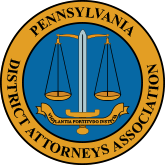Save a Life – Stay Alive: Treatment a Must After Naloxone
By District Attorney David Freed (Cumberland County) and District Attorney John Adams (Berks County)
A recent article in the Philadelphia Inquirer detailed bipartisan efforts to enact legislation that will expand the involuntary commitment process to include those who are drug addicted. The article highlighted two outstanding legislators working on different proposals: Senate Democratic Leader Jay Costa and House Health Committee Chair Matt Baker. PDAA was fortunate to testify last year before the House Human Services Committee in favor of very similar legislation sponsored by Rep. Harry Readshaw.
Any of these proposals, if enacted, will make a meaningful difference and save lives of those addicted, especially those addicted to heroin.
The PDAA strongly believes that more treatment means better public safety and more lives saved. Collectively, we believe that we have a moral obligation to help those who are drug addicted to get better. Otherwise, many—too many—will die. If we know an individual is an addict, is a danger to himself or herself, cannot stop using heroin, and will die as a result, then what are we supposed to do? The status quo is unacceptable.
Both Naloxone and our state Good Samaritan Law have helped to save lives. The PDAA has supported both efforts. But we have realized, as have others, that both need an obligatory treatment component in order to help prevent subsequent overdoses.
Naloxone is a powerful tool that literally saves the lives of someone overdosing on heroin. But without subsequent treatment, the individual saved with Naloxone will continue to use heroin and eventually overdose again. Unfortunately, it is becoming more and more common that addicts are saved multiple times with Naloxone, even within just a matter of days. Too often, addicts refuse treatment, despite the “Warm Handoff” program that several of our agencies have implemented.
Our Good Samaritan Law, which provides immunity for drug possession under certain conditions, is a powerful law we supported because it has encouraged individuals to call 911 when someone is overdosing without fear of being prosecuted when law enforcement arrives. But we have seen an unfortunate unintended consequence: without the leverage of criminal charges, there is little pressure on the addicted to go into treatment. Two individuals who benefitted from the Good Samaritan Law in Berks County, by way of example, recently died of drug overdoses because they ultimately did not go into drug treatment. Ohio recently enacted a Good Samaritan Law this past summer that has an important provision other state immunity laws do not have: immunity is provided to the person who experienced the overdose only if that individual receives a drug addiction assessment and a referral for treatment.
Naloxone is great, but it is not a solution. Good Samaritan immunity is necessary, but it is not a solution. The status quo is not acceptable; it means more death, dying and destruction.
We should not be debating whether our involuntary commitment laws should be expanded to include those who are at grave risk of overdosing, but instead how our laws should be expanded. At the same time, we should be looking at Ohio’s Good Samaritan Law and consider amending the Good Samaritan Law to include a similar provision. These important concepts will bring more treatment to those for whom treatment is what stands between them and fatal overdoses.
If you or someone needs help with the disease of addiction, a full listing of Pennsylvania resources is available here or by calling PA Get Help at 1-800-662-4357 (HELP).
District Attorney David Freed and District Attorney John Adams are both members of the Pennsylvania District Attorneys Association and its Executive Committee.
